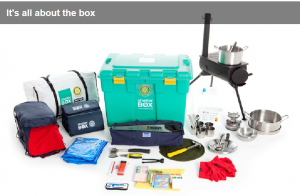Survey Shows Half of American Families Without Survival Supplies
Which half do you fall into?
A poll conducted first in 2012 by the Adelphi University Center for Health Innovation — and repeated since then with the same results — revealed the following:
 ◊ 48% of Americans don’t have a survival kit or emergency supplies.
◊ 48% of Americans don’t have a survival kit or emergency supplies.
◊ Americans believe they can survive an average of 16 days in their homes . . .but over half don’t have even a 3-day supply of non-perishable food and water.
◊ 55% of Americans believe that “authorities” will come to their rescue when disaster strikes.
If you had been a part of this poll, which half of the group would you have fallen into – the half with a survival kit and emergency supplies, or the half counting on someone else to take care of them?
Are you a “taker?”
There has always been political talk about our American Society being “a society of takers.” Most of the rhetoric has been distasteful, some has been ridiculous.
But when it comes to disaster preparedness, there does seem to be a “taker” group — a group that somehow expects others to take care of them. In my estimation, that “taker” half of the population seems to be either lazy, in denial or just plain . . . well, you add in your own best word there!
September is National Preparedness Month. People around the country are planning events to get neighbors and neighborhoods involved. Joe and I will be part of the activity: we typically have three different activities on our calendar this month!
When it comes right down to it, though, there’s only so much we can do. Ultimately, it is up to individuals.
It’s up to individuals . . . meaning you.
Remember that great advertising line, “He ain’t heavy, he’s my brother.”? Here’s another version aimed at disaster preparedness: “It’s not hard, it’s just common sense.” The first three steps are particularly easy:
1. Build or buy a survival kit for yourself and for each person you care about. Here’s a link to our updated Top 10 List Of Emergency Items for your kits. Or, if you just don’t have time to put them together, buy pre-made kits. Check out our emergency supply kit reviews to be sure you’re getting the most for your money.
2. Buy some extra food and water every time you shop, and stick it in the back of the cupboard. Eat from the front.
3. Get to know your neighbors. They are the ones who will already be there in an emergency. They are the ones who will come to your rescue, not the authorities.
Three simple steps will put you in the other half of the equation – where you belong!
Please share this article with the people around you. The more prepared they are, the safer YOU will be. And the better you’ll sleep at night.
Virginia Nicols
Your Emergency Plan Guide Team




